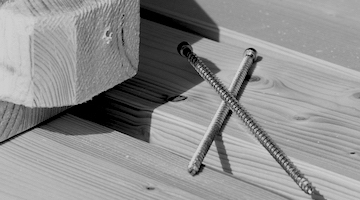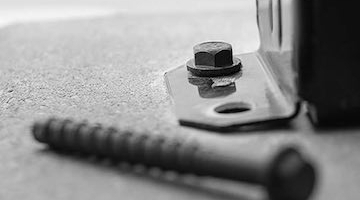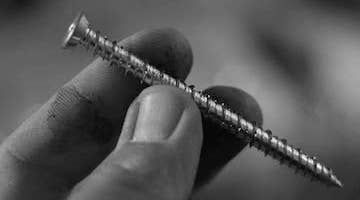- Home
- REPORTS & NEWS
- Composite Decking Screw
Composite Decking Screw
Dec 10, 2020.jpg)
Typlically, the structural members of deck are made from pressure-treated lumber. Pressure-treated wood is preferred for the structure of a deck because of its reasonable cost and high resistance to insect and moisture damage. However, deck surfaces made of pressure-treated wood tend to crack, split, twist and splinter after prolonged exposure to the elements. Thus, every few years the property owner is confronted with a considerable expense of both money and labor in having to remodel the deck boards. In response to the deficiencies of pressure treated wood decking, many houseowners and contractors are now specifying alternative materials for decking, such as tropical hard wood or artificial composite materials. Composite lumber is an attractive material choice for deck boards because it is substantially rust-free. They are constructed of plastic and wood materials, such as blends of scrap and sawdust. High quality composite lumber may be constructed of polyethylene particles and ground-up wood chips, which may offer a more genuine wood-like appearance when compared to lesser grades.
Unlike the pressure-treated wood may react sensitively with the environment, composite lumber products are environmentaly sound because they may contain a significant amount of recycled plastic. Except the cost issue, the problem with using composite lumber is that the surface easily bulge in the vincinity of the screw head when conventional deck screws are drilled into the composite board. This is caused by the action of the screw displacing the composite material, forcing the material upward. Another critical issue of using composite decking board is being less supportive to the external loading. So decks using plastic decking require more floor joists, and there are a greater number of screws to install. Even a modest deck requires hundreds of deck screws, maing each additional step very expensive in terms of added labor. Moreover, the traditional wood decks can not stay for long experieincing wet springs, blistering summers and frigid winters again and again. The wood decks tend to splinter and warpe causing fasteners pulled-out or even broke-off if decking screws are not mechanically strong enough.
.jpg)
The wood species, applied area, connecting way, and structural design are the most important factors affecting the screws in fixation of the deck structure. Here comes common decking terminologies:
1. Decking Boards: The boards at the top of the deck that people walk on. Decking Boards are often installed perpendicular to the joists.
2. Joists: The joists are between the bearers and the decking boards. They are what the decking boards get fixed to.
3. Bearers: The bearers are the main support structure of the deck. Bearers are often laid perpendicular to the joists.
4. Perimeter Joists: The joist that runs around the primeter of the deck. Can be referred to as the "rim joist".
5. Joist Hanger: The hardware that is used to connect the joist with the ledger.
6. Ledger: This is used on decks that are connected to another structure(e.g. a house or wall). They connect the decking framework to the structure.
7. Fascia: Vertical boards that hide the decking framework. The material used for fascia is generally the same as the decking boards.
8. Post: The vertical member that joins supports the deck structure. The post is connected to the decking bearers and to the ground through a footing.



